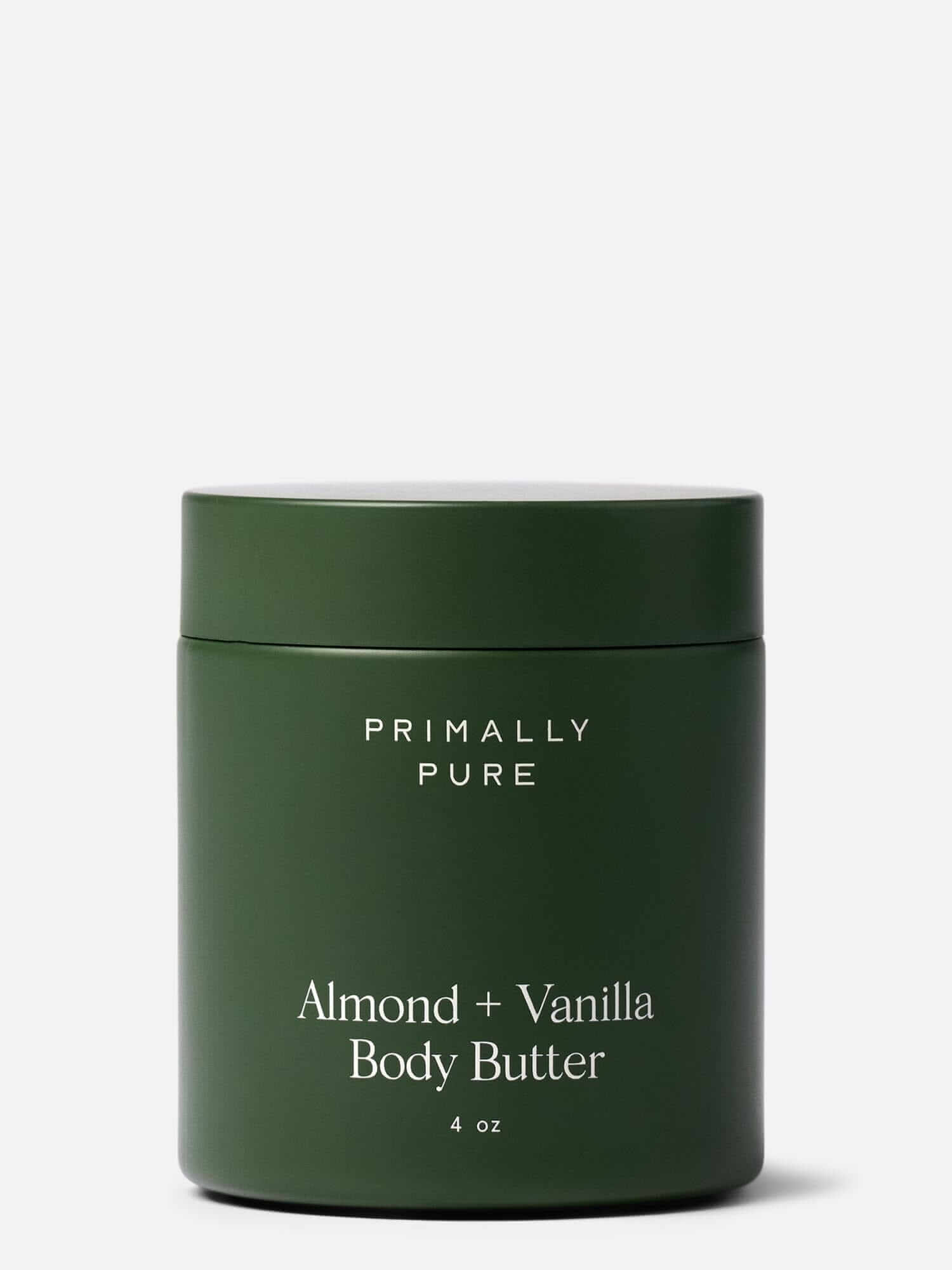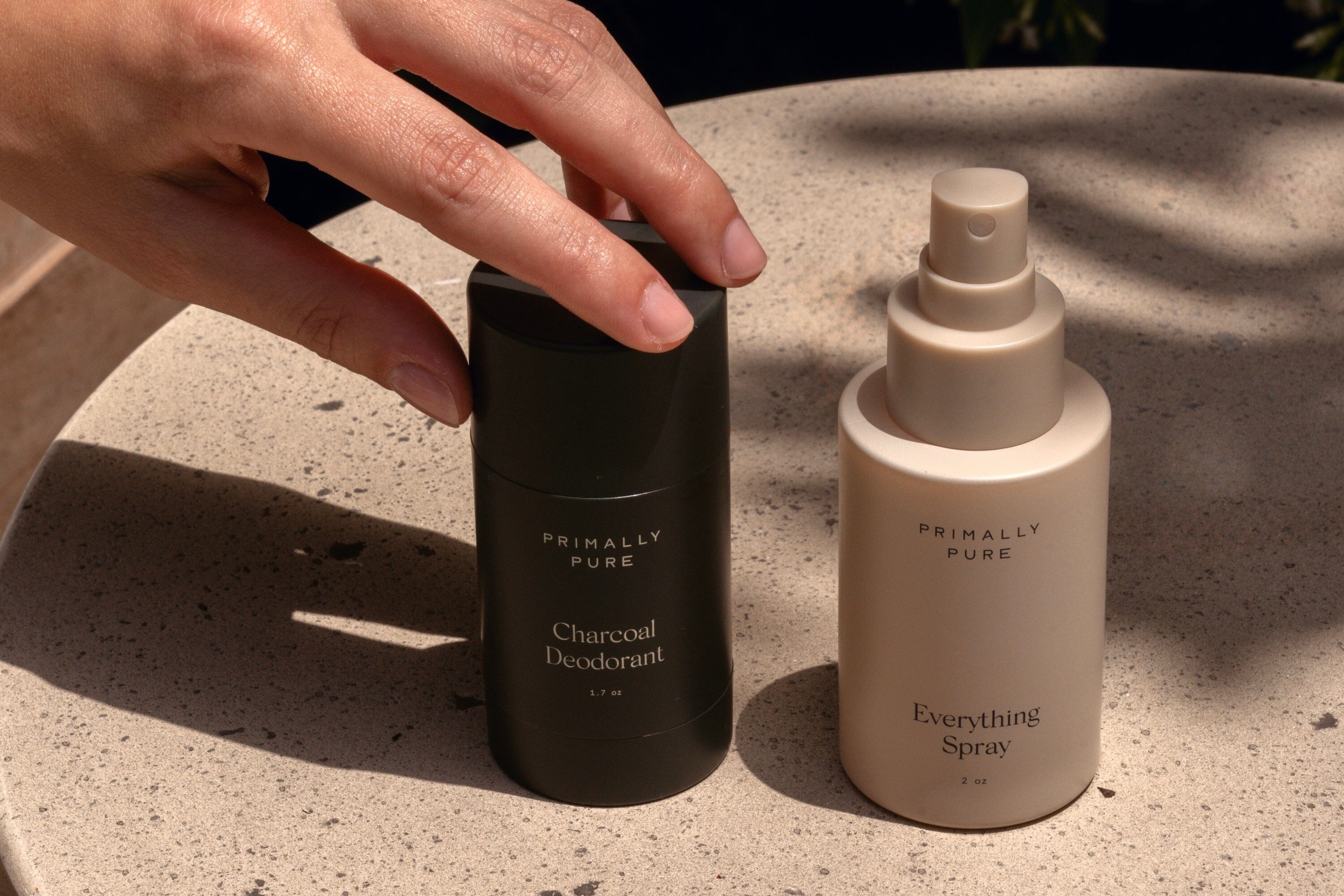What’s Non-Comedogenic? Why You Need To Know + Choosing Safe Products
Summary
Skincare term: comedogenicity – the ability of an ingredient to clog pores. Here’s what you need to know + why online rumors aren’t always accurate.
When it comes to skincare, there’s one thing we can all agree on. No one wants to use a product loaded with pore-clogging ingredients.
Especially if you’re experiencing acne or inflammation in your skin.
As ingredient awareness grows, there’s misleading and confusing information about comedogenicity. Our community has asked several questions, seeking guidance. So today we're going to provide tips for identifying truly non-comedogenic formulas.
We’re diving deep. We’re going to provide:
- Helpful context for determining comedogenicity and pore-clogging ingredients
- Answers to product-specific questions on comedogenicity
- Our formulator’s take on some of the most debated comedogenic ingredients
- The benefits of misunderstood “comedogenic” ingredients (even for acne-prone skin!)
But first, let’s get clear on what comedogenicity really is.
Defining Comedogenicity
Let’s discuss comedogenicity to understand why it’s important. To us, this is a topic worth understanding – regardless of your skin state.
Comedogenicity is a measure of the potential of an ingredient to clog pores. It ranges from 0 to 5, with 5 being the most comedogenic. Comedogenicity is helpful information for any product applied to your face.
Your skin’s microbiome is delicate. Using a comedogenic product can block the natural function of your skin and create issues. High concentrations of pore-clogging ingredients can cause irritation, excess oil, or inflammation – even acne.
→ Seems like determining comedogenicity should be simple, right? You just need to determine which ingredients are pore-clogging ingredients.
Well, in the age of the internet, influencers, and massive greenwashing + clean beauty campaigns, comedogenicity is anything but simple. It can be extremely challenging to figure out what’s non-comedogenic. Let’s discuss why.
The Confusion Around the Term Non-Comedogenic
There are four key factors that contribute to the confusion around comedogenicity. These make it difficult for consumers to know which ingredients are safe to use on their skin.
- Rabbit ear testing – has been a common method used (which we definitely don’t condone or use). Yes, it’s skin, but biologically, it’s very different from human facial skin.
- Human testing – usually done on the back. Although it IS human skin, it’s also very different from facial skin. It doesn’t provide great information on comedogenicity.
→ Ex: This is similar to the conversation around essential oils in skincare. They’re not dangerous when made responsibly. They must be properly processed, diluted, formulated, and considered for total exposure.
Over time, factors like these have made the term non-comedogenic quite murky. So, let’s get even more specific. Here’s what you need to know about your skincare and comedogenicity.
Understanding Comedogenicity in Facial Skincare Products
Like many things taken out of context, comedogenic ingredients are extremely misunderstood. Responsible and educated formulation is key. So let's talk about comedogenicity and the properties of specific ingredients in your skincare products.
First things first. With comedogenicity, we have to consider individual ingredients vs. whole formulas. These are totally different scenarios. Our formulator Tommi Hutchins said it best:
“You must understand the formula as a whole to determine its true comedogenic rating.
A complete formula with 2, 3, 4, 15, or even 20 ingredients, you really have to look at it all together. I’d caution consumers from picking out one or two particular ingredients in a formula and assuming the formula as a whole will be a problem with comedogenicity.”
Tommi pours extensive knowledge, training, and experience into every PP formulation. We're so thankful for how she explains comedogenicity in context.
With the right ratios and synergistic combinations, comedogenicity isn't a concern. Yep, you heard that right! Used in the correct way, a “comedogenic ingredient” can be a highly beneficial addition. It can further enhance the formula + your complexion.
We carefully source and formulate all our products with nature’s best ingredients. So now that you have some context, let’s discuss comedogenicity + our formulations.
PP’s Non-Comedogenic Formulas Explained
As a holistic skincare brand thinking outside the box, we're committed to using the best ingredients. Always with the MOST benefits for you + your skin.
Some of our products do contain ingredients that some categorize as comedogenic. But that’s far from the end of the story, and it definitely doesn’t mean the product itself is comedogenic. Here’s why.
Context: The Formula + Experience as a Whole
We’re big on context when it comes to hot topics of debate. ;)
There are a few things to note about our formulas containing comedogenic ingredients. So, let’s address a few of the biggest factors to consider.
→ Some might mistake an initial purging as worsened acne. It’s normal to experience purging as your skin eliminates years of build-up from toxins. Especially when switching from conventional water-based products to non-toxic, natural oil-based skincare products.
With purging, it's easy to blame a comedogenic oil. But your skin is such a complex organ impacted by various factors. So it's hard to isolate one “comedogenic ingredient” as the cause. Congestion and breakouts have many different causes.
In other words, sometimes an intensified skin issue has a deeper-seated root cause.
→ Comedogenic ratings only cause potential concerns with facial products. Facial skin is much more delicate than the skin on the rest of your body. Some ingredients we use (like coconut oil) are considered comedogenic. But they aren’t generally used in formulas intended for your face.
And when used in facial products, rest assured they’re in the appropriate form + serve a beneficial purpose.
→ Acne is a very complex problem beyond comedogenicity. It likely involves a lot more than clogged pores or one comedogenic ingredient. Acne is also linked to gut health, hormonal imbalances, and internal issues/inflammation.
→ We should base comedogenicity on the whole formula and how it functions together. Sometimes a singular ingredient with comedogenic potential provides critical benefits within the formula. So in some cases, we only use a small but beneficial amount of the comedogenic ingredient. Doing so can eliminate the concern for comedogenicity.
This is where a thorough understanding of ingredients + proper formulation comes into play. ;)
Most-Asked-About Comedogenic Ingredients
Let’s walk through a few of the most frequently asked-about comedogenic oils. We want to show why we use them in our products + how we properly use them in our formulations.
Coconut Oil
Different processed forms of coconut oil have various levels of comedogenic potential. As long as you know which forms are present, you have all the right information to make an informed decision.
- Pure coconut oil – contains more fatty acids. It’s generally considered a comedogenic oil. We only use this pure form of coconut oil in our home and body products, so there’s no cause for concern here. Our cleansing bars contain pure coconut oil. However, the saponification process lowers comedogenicity, making it beneficial to use.
- Fractionated coconut oil – fatty acids and long-chain triglycerides (aka parts of the fats) have been removed. This makes it far less comedogenic. Though we believe it could be supportive, we don’t use fractionated coconut oil in our facial products. Our baby oil, body wash, and body oils contain fractionated coconut oil.
*We love using our Baby Oil to remove eye makeup. Since it’s the first step in cleansing, it doesn’t stay on your skin anyway.
Marula Oil
Lately, some well-known skincare influencers claim marula oil is highly comedogenic. As a result, we've had questions from our community members asking why it’s in our Clarifying Serum and mask.
→ Side note: We’re proud that our community knows to pay attention to ingredients and do their research!
Here’s the thing about marula oil. Yes, most sources would consider marula oil to contain comedogenic potential. This is because it contains about 75% oleic acid. Oleic acid is a fatty acid that can be comedogenic in some cases. But we use a small ratio with less than 10% oleic acid present from the addition of marula oil.
Even still, here’s why marula oil deserves a place in our Clarifying Serum (and mask). It’s a coveted beauty skincare secret from ancient cultures in South Africa. And it’s specifically beneficial for acne-prone or congested skin because it’s:
- Quickly + easily absorbed (as part of a balanced formula)
- Full of healing and hydrating properties
- Anti-inflammatory and helps restore balance
- Rich in vitamins that repair free radical damage + fade discoloration
- Able to improve skin tone and texture
All these properties are beneficial in a clarifying product! Our formulations use a small ratio to benefit your skin + assist the overall result. The properties are valuable when combined with other carefully chosen ingredients. So the comedogenicity of the overall formula is not compromised.
Tallow
There’s some conflicting information on this animal-based fat. Some would consider tallow a somewhat comedogenic ingredient. Here’s our take on it:
It’s a debate similar to essential oils. Comedogenic ingredients – tallow, or any other oil – contain a combination of fatty acids and waxes. So yes, some oils will naturally have more comedogenic potential than others.
But when sourced + correctly formulated, an ingredient like tallow can be a game changer for various skin concerns.
Our ethically sourced, grass-fed + finished tallow is foundational in many of our best-selling products because it:
- Has a similar makeup to your skin’s natural oils/sebum (tallow even means “sebum” in Latin)
- Contains an abundance of beneficial fatty acids, including conjugated linoleic acid
- Has a biocompatible nature, meaning it absorbs easily + works synergistically with your skin
- Was used in ancient cultures for a variety of skin ailments
- Is soothing and non-irritating, even for the most sensitive skin
- Is deeply reparative for your skin’s microbiome
- Offers anti-inflammatory and antimicrobial properties
To us, these benefits far outweigh the potential for comedogenicity. (Plus, thousands of our 5-star reviews and community members have experienced the power of tallow in skincare first-hand!)
It's true, some of these ingredients could be pinned as pore-clogging ingredients. But we want you to know that we vet every single ingredient in our products. Each component serves a specific + beneficial function for your skin.
Our advice on comedogenicity?
“Non-comedogenic” shouldn’t be the most important factor in choosing your skincare products.
Empowering You With Holistic Knowledge + Context
Comedogenicity is a confusing topic. There's so much information and opinions to sift through. That’s why we wanted to give you our honest, holistic approach. Transparency is so important to our ethos.
We continue to prioritize your health above all else. Know that we value your feedback and love that our customers pay attention to what goes in/on their bodies.
Rest assured, our products are truly + unapologetically formulated with ingredients to support your skin’s health and wellness.
We’re always here to answer your questions.
XO
Pin This Post: Save for fresh inspo on your fav Pinterest board.






Leave a Comment